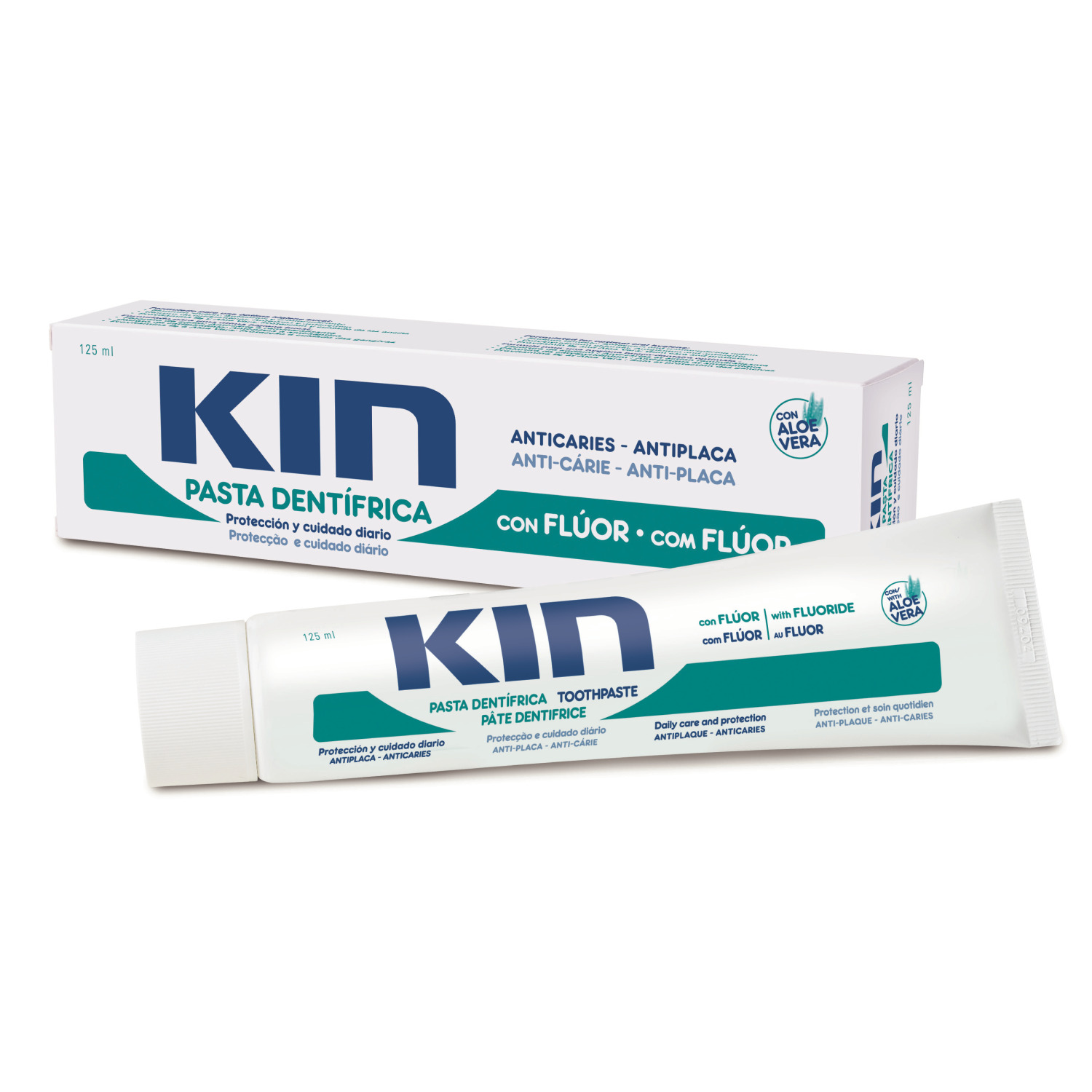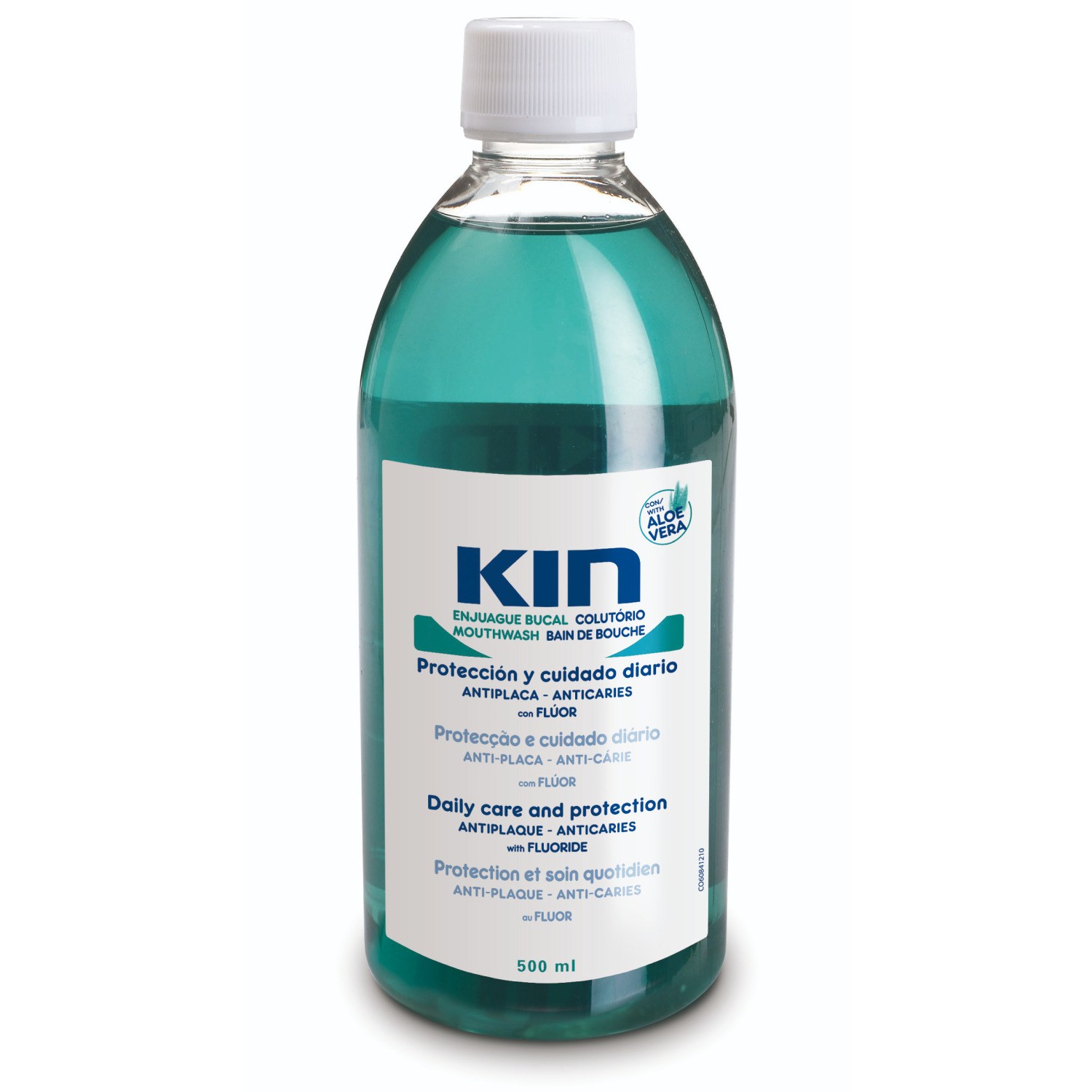Through this guide on gum care you will find all the information you need to keep your mouth and gums healthy. We analyse the main diseases that affect the gums, how to prevent and treat them. Discover the best treatments to combat gingivitis and periodontitis, and what care is needed for each type of gum.
KIN CONTENT GUIDES
Gum Care Guide
Table of Contents
- 1. Periodontal diseases: gingivitis and periodontitis.
- 2. What is gingivitis?
- 3. What is periodontitis?
- 4. Receding gums - Causes and solutions
- 5. Remedies to prevent gum bleeding
- 6.
- 7. White Gums - What Causes White Spots on Gums?
- 8. Curettage of the gums or cleaning of the gums
- 9. How Do Gum Problems Affect Tooth Loss?
- 10. Swollen gums during pregnancy
- 11. Types of gums and specific care to keep them healthy
- 12. How do I know if I have a gum problem?

1. Periodontal diseases: gingivitis and periodontitis
Bleeding during brushing or red and swollen gums are symptoms of periodontal disease. These symptoms affect a large part of the population, who are not aware of the seriousness of periodontal diseases such as gingivitis and periodontitis.
Do you know how to detect them, how to prevent them and what treatment to follow to protect your gums? Taking care of your gums starts by practicing the most appropriate oral hygiene techniques every day, as the best prevention and treatment for gingivitis and periodontitis.

2. What is gingivitis?
Gingivitis is a mild form of periodontal disease. With characteristic symptoms such as inflammation, redness and bleeding of the gums when brushing, these early manifestations can develop into a major problem when not treated correctly.
At the slightest discomfort in the gums, frequent bleeding, bad breath problems and the appearance of stains in the tissue, it is necessary to implement a series of measures to stop and treat oral problems.
Read more
3. What is periodontitis?
Also known as gum disease, periodontitis is the inflammation and destruction of the periodontal tissue surrounding the tooth. It results from an untreated gum infection, which affects the soft tissue and can destroy the bone supporting the tooth, leading to tooth loss.
As with gingivitis, some of the most characteristic symptoms of periodontitis are bleeding, inflammation, redness and receding gums. Over time, if left untreated, the progression of the disease will result in the appearance of space between the teeth and tooth mobility, symptoms of advanced periodontitis.

4. Receding gums - Causes and Solutions
The main function of the gums is to provide support and protection for the teeth. Some of this soft tissue can be lost, causing what is known as receding gums. Receding gums are not only an aesthetic problem, but also a health problem when related to periodontal disease or poor lifestyle habits.
Gum recession is quite common, and has different solutions depending on the level of affection in each patient. For the mildest cases, a simple cleaning allows the recovery of a large part of the lost tissue. In more severe cases, the only solution is surgery to repair the damage.
Read more
5. Remedies to prevent bleeding gums
The main cause of bleeding gums is the presence of an infection. As the main sign of oral disease, the best remedy to treat mild gingivitis is to use Mouthwash to eliminate bacteria.
Together with proper brushing, and the use of special products for bleeding gums, it is possible to restore the gums to a normal state of health.
Your KIN must-haves:
Find us at:
You can buy our products in your nearest pharmacy.
Find us in your trusted online store.

7. White Gums - What Causes White Spots on Gums?
Gum colour is an indication of oral health. When gums change from pink to a more reddish or whitish colour, it is often directly related to different diseases.
What do white gums mean? The accumulation of bacterial plaque, the presence of fungus or candidiasis infection, or iron deficiency anaemia are just some of the reasons for the change in colour. For every problem there is a suitable treatment.

8. Curettage of the gums or cleaning of the gums
Known as scaling or root planing, gum scaling is a type of cleaning performed by a dental specialist as part of the treatment of bleeding gums. This deeper gum cleaning is performed when tartar is lodged under the gum line, causing inflammation of the gums.
After curettage treatment, and to promote better recovery, it is recommended to use a Mouthwash to prevent infection and bleeding of the gums.

9. How Do Gum Problems Affect Tooth Loss?
One of the greatest dangers of gum disease is tooth loss. Periodontitis is the leading cause of tooth loss in adults, when the infection reaches the bone and ligaments that support the tooth.
With the passage of time, and due to untreated gingivitis, teeth become loose, reaching a point where it is impossible to recover them. For this reason it is extremely important to detect and treat gum problems in time.

10. Swollen gums during pregnancy
Gestational gingivitis is a fairly common problem in women during pregnancy. In most cases, it stems from a pre-pregnancy problem, which is aggravated during pregnancy due to hormonal changes.
Bleeding gums in pregnancy should be properly treated with good brushing and the use of other oral hygiene aids such as mouthwashes, floss and tongue scrapers to minimise the risk of infection.
Find your nearest KIN pharmacy

11. Types of gums and specific care to keep them healthy
The types of gum are differentiated according to their function and the place they occupy inside the mouth. Gums are the mucous tissue that we all have inside the oral cavity, protecting and supporting the teeth.
Depending on the area in which it is located, there are 3 parts or types of gum. Just above the tooth is the free or marginal gum, which is the first to suffer the consequences of periodontal disease. Above this, there is the attached gingiva surrounding each individual tooth. Lastly, there is the mucosa, the softer part below the lips. Eliminating bacteria from these 3 parts of the gum is essential for it to remain healthy and strong as a whole.

12. How do I know if I have a gum problem?
Healthy gingiva has a uniform pink colour. It should cover the entire root of the tooth, with a firm consistency and no signs of bleeding.
When gum disease occurs, the gums completely change their appearance, presenting characteristic symptoms. The gums appear swollen, with a reddish colour or whitish pigmentation, as well as bleeding that is accentuated when eating or brushing the teeth. Receding gums are another symptom of gingivitis or periodontitis, which should be treated as soon as possible to minimise the risk of periodontal disease.


